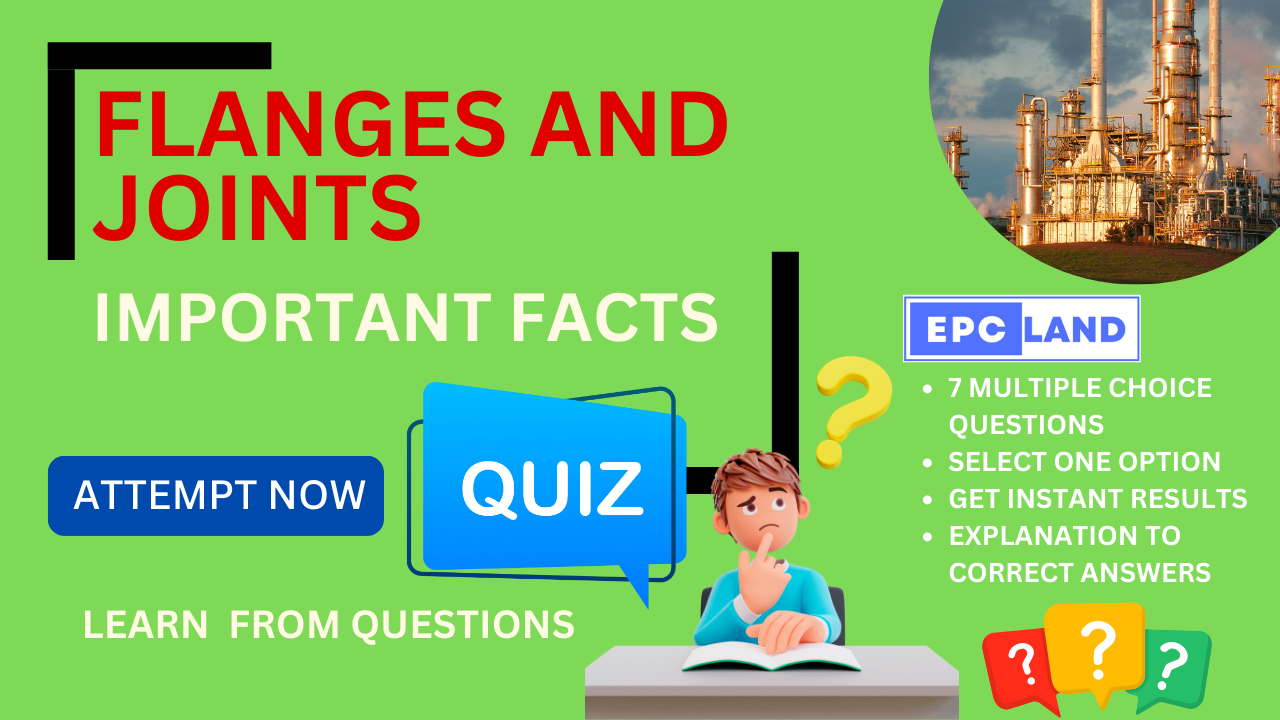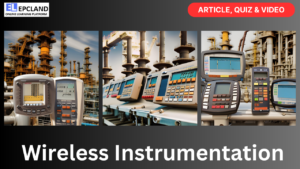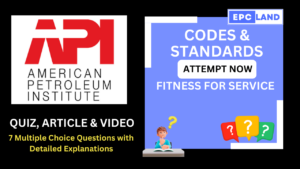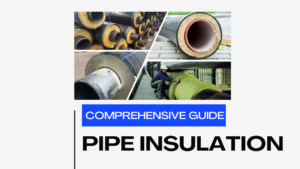I. Flanges & Joints
What type of material is acceptable for manufacturing flanges?
Explanation: Flanges should only be manufactured from forged material, and any other material, including free machining material and bar stock, is not acceptable.
II. Material Certificates
What standard should material certificates for flanges comply with?
Explanation: Material certificates for flanges shall comply with BS EN10204, 3.1.
III. Threaded Flanges
In what type of piping system should threaded flanges not be used?
Explanation: Threaded flanges shall not be used, except in a galvanized piping system.
IV. Slip-On Flanges
How should slip-on flanges be welded?
Explanation: Slip-on flanges shall be welded inside and outside.
V. Joints
When should joints be used in flanged or wafer type valves and equipment connections?
Explanation: Joints shall be kept to a minimum and generally used only in specified circumstances, including flanged or wafer type valves and equipment connections.
VI. Forged or Plate Material
What components may be made from forged or plate material?
Explanation: Figure 8, spades, and spacers may be made from forged or plate material.
VII. Welded Joints
Under what circumstances are welded joints acceptable for components?
Explanation: Welded joints are not acceptable for components except for the handle or web, if required, and for maintenance and dismantling spools.
Table of Contents
Don’t miss the Course on Effective Isometrics Management: Check Now
Enrollment Link
Recommended courses (Published on EPCLand)
- Complete Course on Piping Engineering
- Basics of Piping Engineering
- Piping Layout Engineering
- Piping Material Engineering
- Piping Stress Analysis
- Material Requisitions
- Piping Material Specifications
- Valve Material Specifications
- Plant Design & Layouts-OISD 118
- Isometric Management
Library of Technical Articles
Don’t miss out the collection of 15+ articles on following topics:
- Basics of Oil and Gas Industry
- Valves
- Testing
- Tank
- Piping Bulk Items
- Pipe
- Metallurgy
- Piping Materials
- Layout
- Instrumentation
- Heat Exchanger
- Type of Contracts
- Codes and Standards
- ASTM Standards
- Articles on Piping Specialty Items
Video details of Complete Course on Piping Engineering
Why Enroll in the EPCLand
Proven Track Record– PTR
Activities & Achievements before launching EPCLand
- Published more than 50+ short courses
- 3000+ Enrolments
- More than 3,500,00 Minutes of watch hours in the last 2 years
- 4000+ Students in 100+ Countries
- Rating of 4+ out of 5
- 1000+ YouTube Videos
- 8K+ Subscribers
What Students will Learn
- Codes & Standards of the Energy Sector
- Piping Material Engineering
- Piping Layout Engineering
- Stress Analysis
Interesting facts
- All the published courses have been developed by Industry Experts with more than 2 decades of experience
- Content is based on Practical experience and real-time problems.
- Content is designed and organized in such a manner that it can be easily grabbed.
- Complete website, Blogs and Quiz sections are Planned, Designed and published by myself (About me: Atul Singla)
- Complete flexibility of Time & Location, Students can access the content from anywhere & anytime
- Moreover, once enrolled, the content can be access as many times as you want, which helps in understand the fundamentals in a better way.
Conclusion
In conclusion, our courses are meticulously crafted by industry experts with over two decades of hands-on experience. The content is rooted in practical knowledge, addressing real-time problems. The material is thoughtfully designed and organized for easy comprehension. Every aspect, from the website to blogs and quizzes, has been planned, designed, and executed by Atul Singla, ensuring a comprehensive and seamless learning experience. With the flexibility of accessing the content at any time and from any location, students have the freedom to learn on their terms. Furthermore, enrollment grants unlimited access, allowing learners to revisit the material as often as needed, fostering a deep understanding of the fundamentals.



